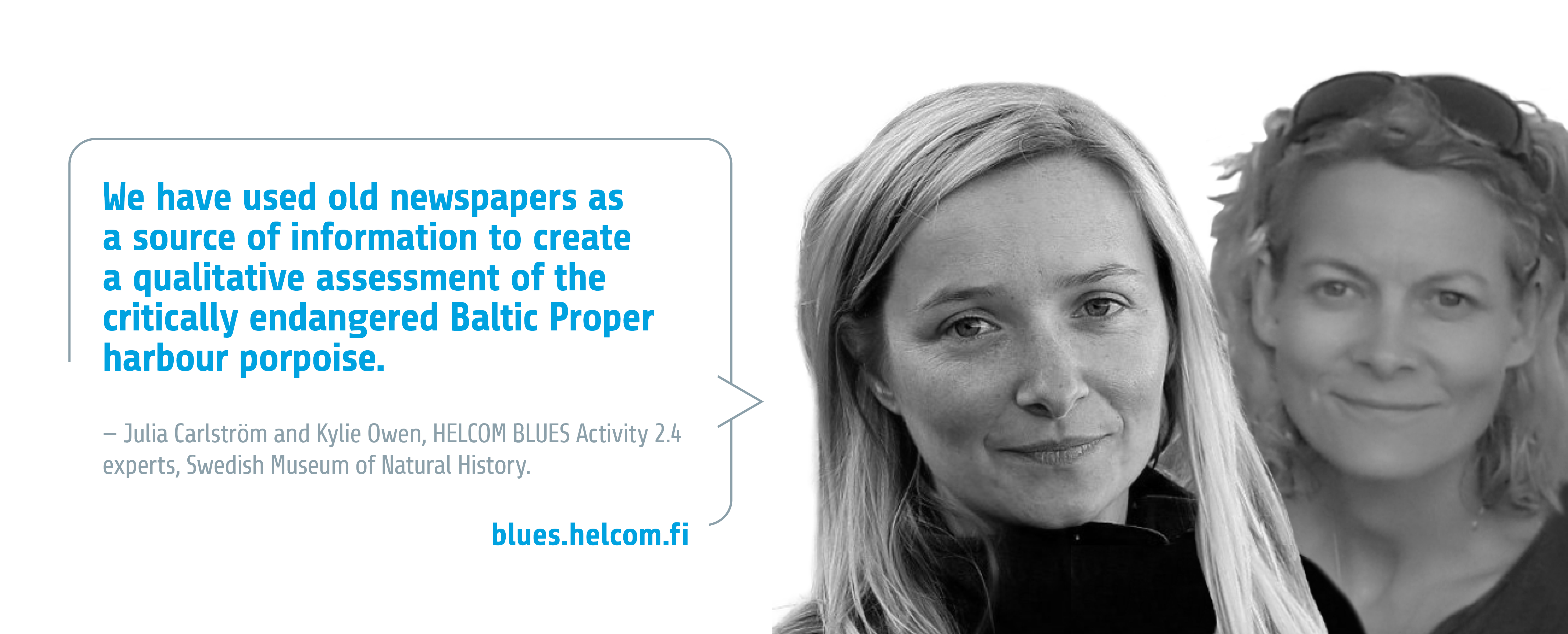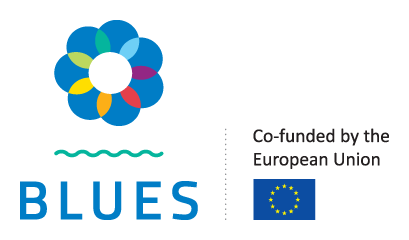
Julia Carlström and Kylie Owen work on Task 2.4 Harbour porpoise. They are both researchers at the Swedish Museum of Natural History where they conduct research on the impact of human activities, such as underwater noise, on the occurrence and behaviour of the harbour porpoises. They are also responsible for the Swedish national monitoring program on harbour porpoises, and are both involved in the HELCOM indicator group for harbour porpoise abundance and distribution (Julia is the co-lead), and as an experts within the Agreement on the Conservation of Small Cetaceans of the Baltic, North East Atlantic, Irish and North Seas (ASCOBANS). Julia is also a part of the OSPAR Marine Mammal Expert Group, and the ICES Working Group on Marine Mammal Ecology.
What is your Activity/Task in HELCOM BLUES all about? What main challenges and/or pressures on the Baltic Sea does it try to solve?
In sub-tasks 2.4.3 we aimed to completed a qualitative assessment of the critically endangered Baltic Proper population of harbour porpoises, so that the status of the population could be included in HOLAS III. To date, there is only one abundance estimate for this population, showing that only approximately 500 individuals remain. We lack information on historical abundance levels, making it difficult to define good environmental status for harbour porpoise abundance and set an indicator with a threshold. However, from anecdotal historical information we know that the population use to be much larger, and that sightings of porpoises were a common occurrence in the Baltic Sea. We collated and reviewed historical information on the occurrence and distribution harbour porpoises throughout the Baltic Sea from the late 1800s until present day, using sources such as old newspapers. This process was essential to highlight how the abundance and distribution of the population has changed over time, enabling a qualitative assessment to be completed.
What are the planned outcomes of your specific BLUES Activity/Task?
The qualitative assessment produced will be presented to the relevant HELCOM Expert Groups and subsequently for endorsement for use in HOLAS III. The additional data collected on harbour porpoise presence will be submitted to the HELCOM Biodiversity database so that it is available for future studies.
How will your BLUES Activity/Task benefit your organization in particular and the Baltic Sea in general?
Harbour porpoises are a top predator that play an important role in well-functioning marine ecosystems. The inclusion of harbour porpoises in the Baltic region in HOLAS III is essential to accurately portray the true state of the ecosystem. Highlighting the poor state of this species, and the impact this will have on the ecosystem, will lead to more effective management practices to better conserve this species and ensure the health of the Baltic Sea.
